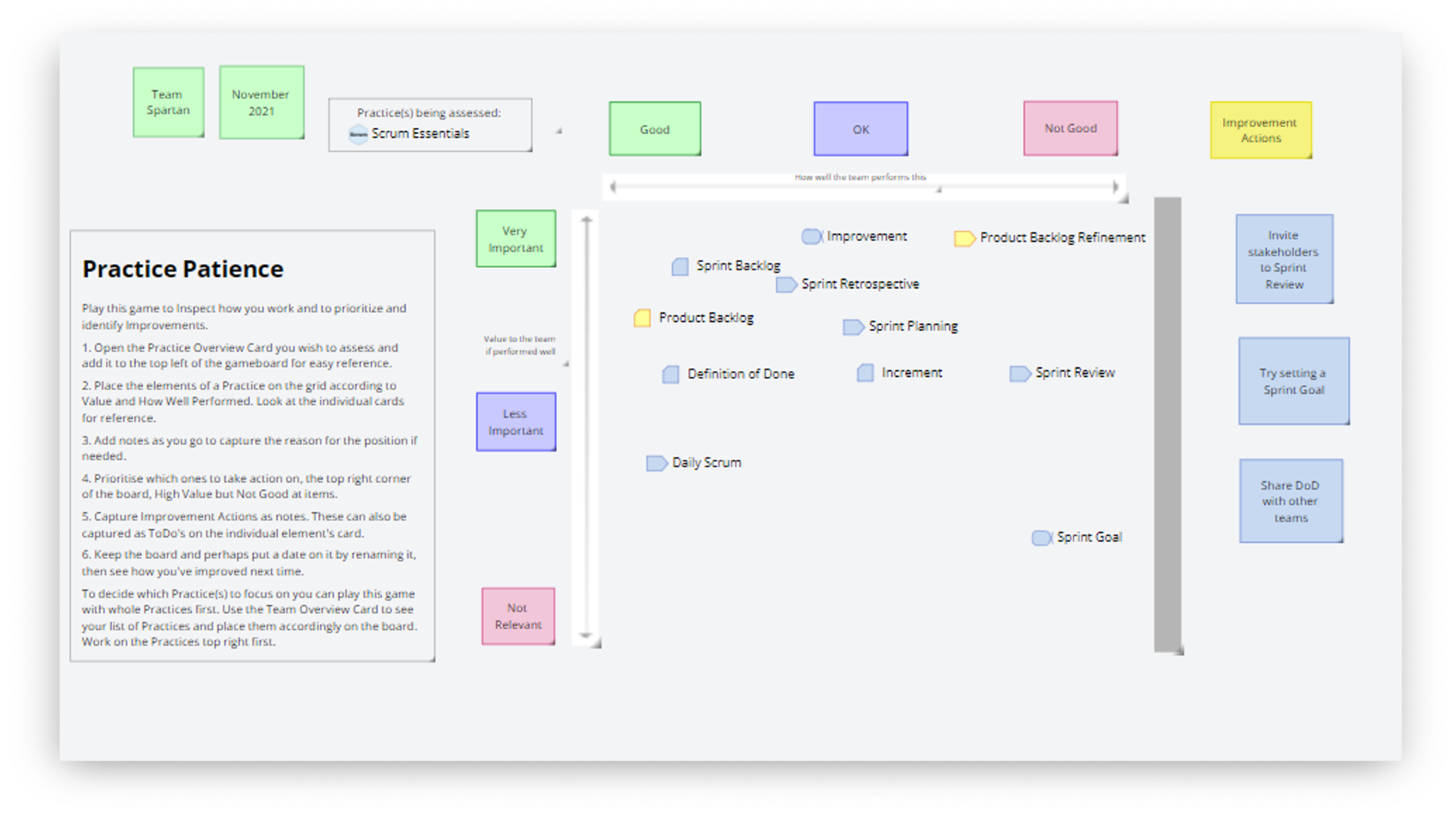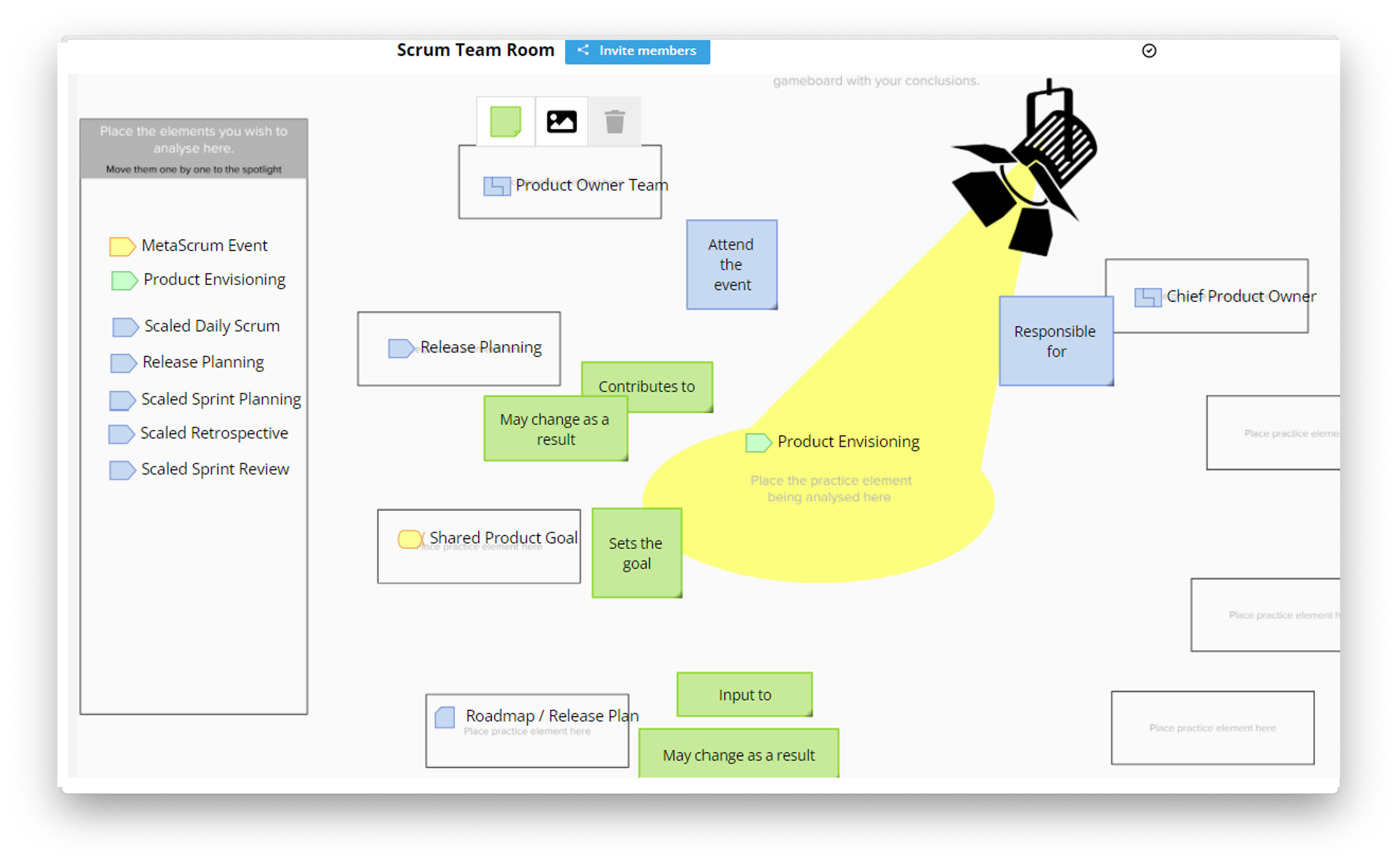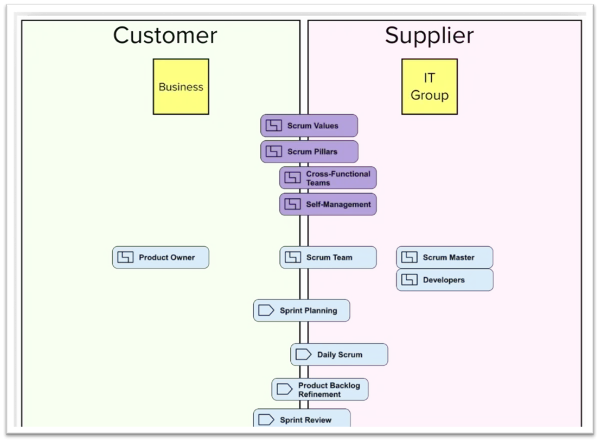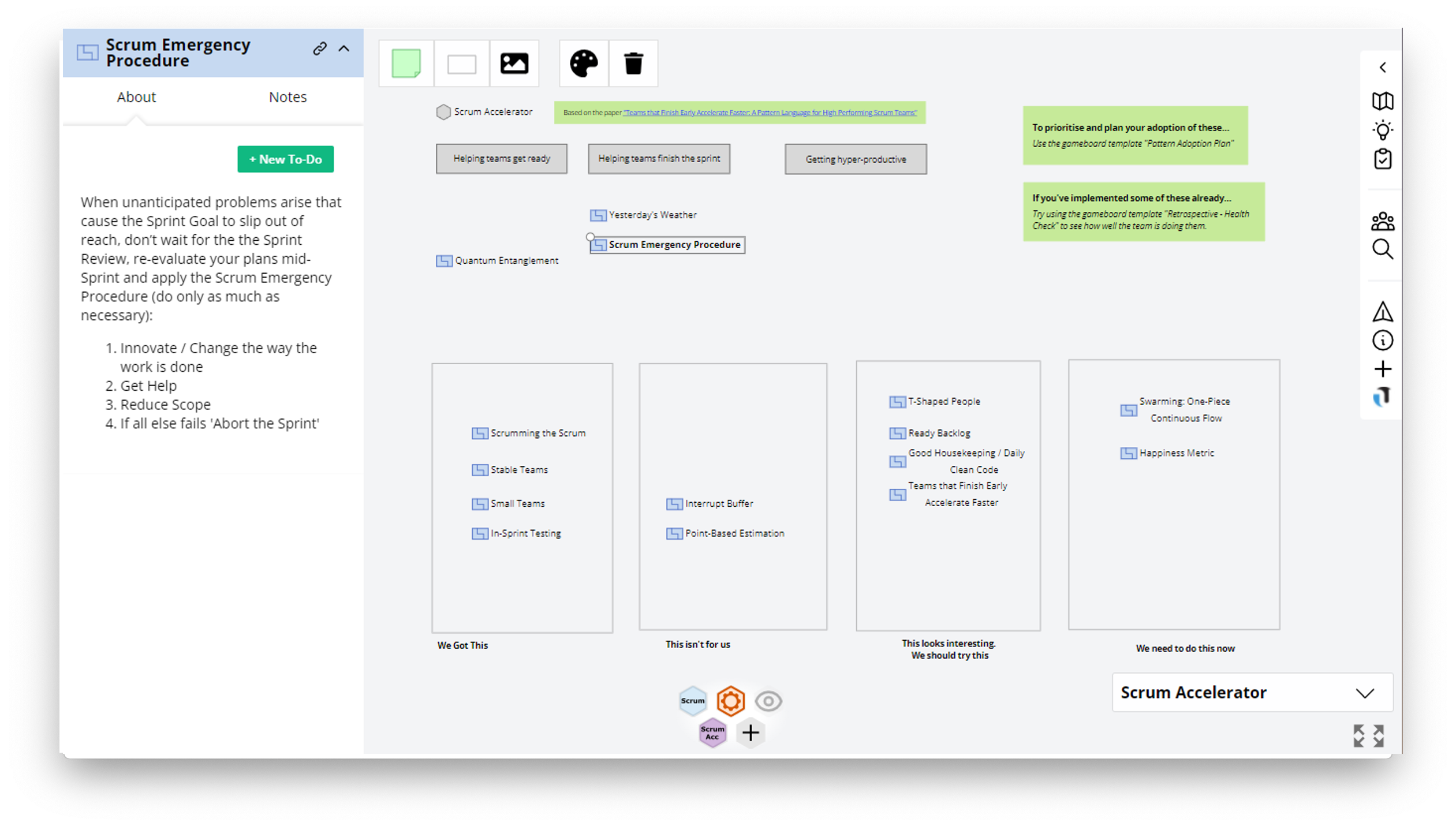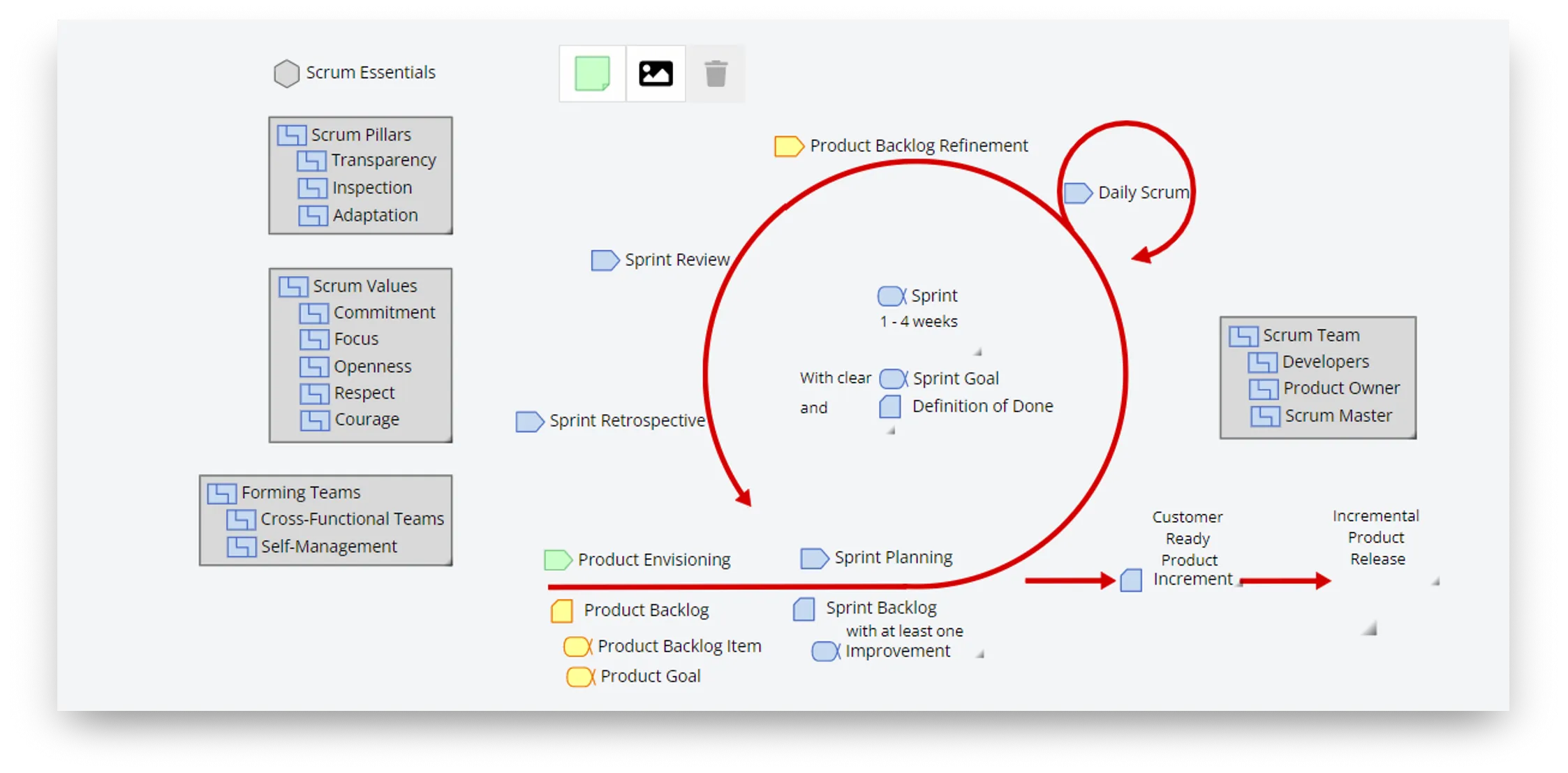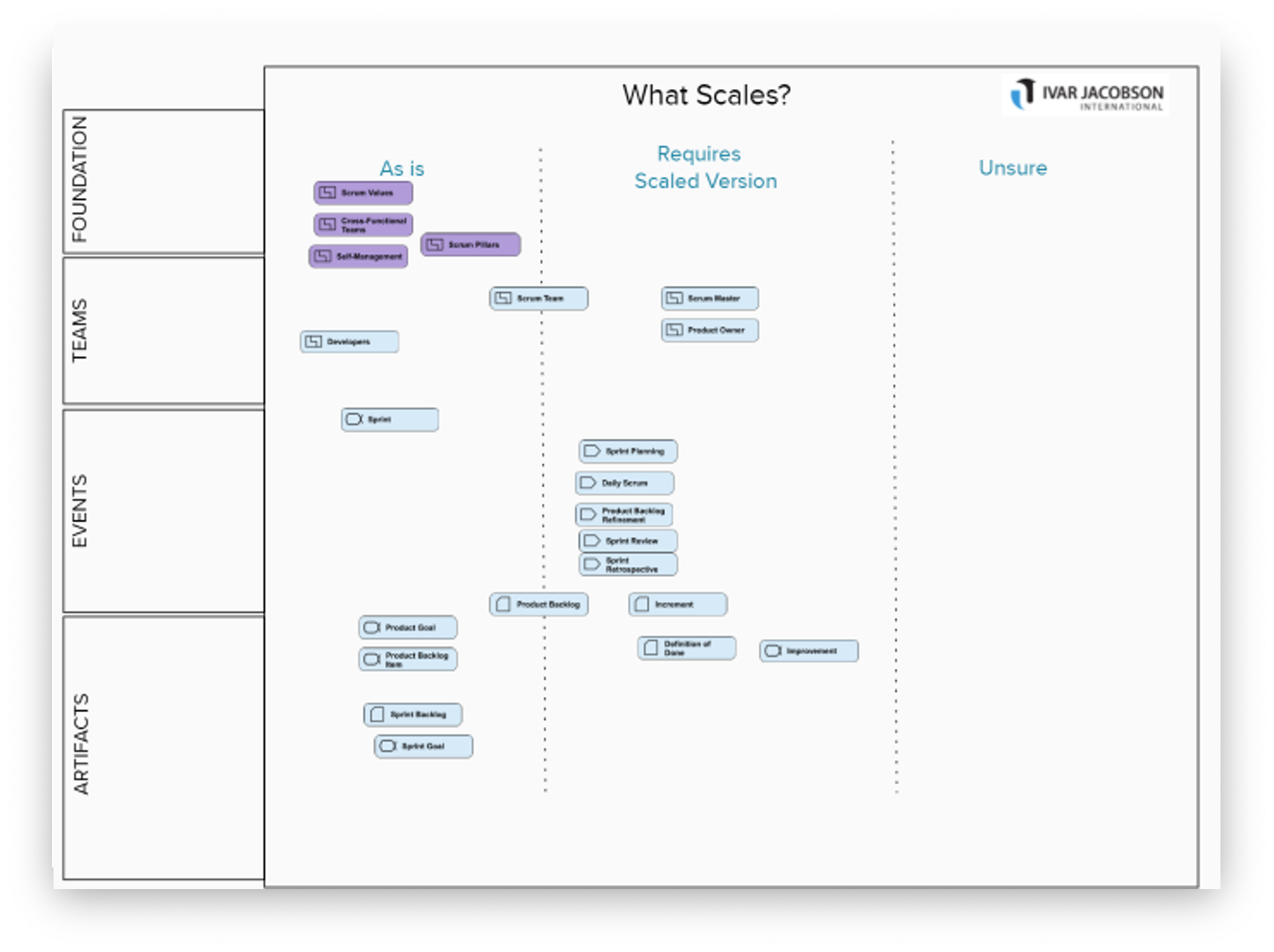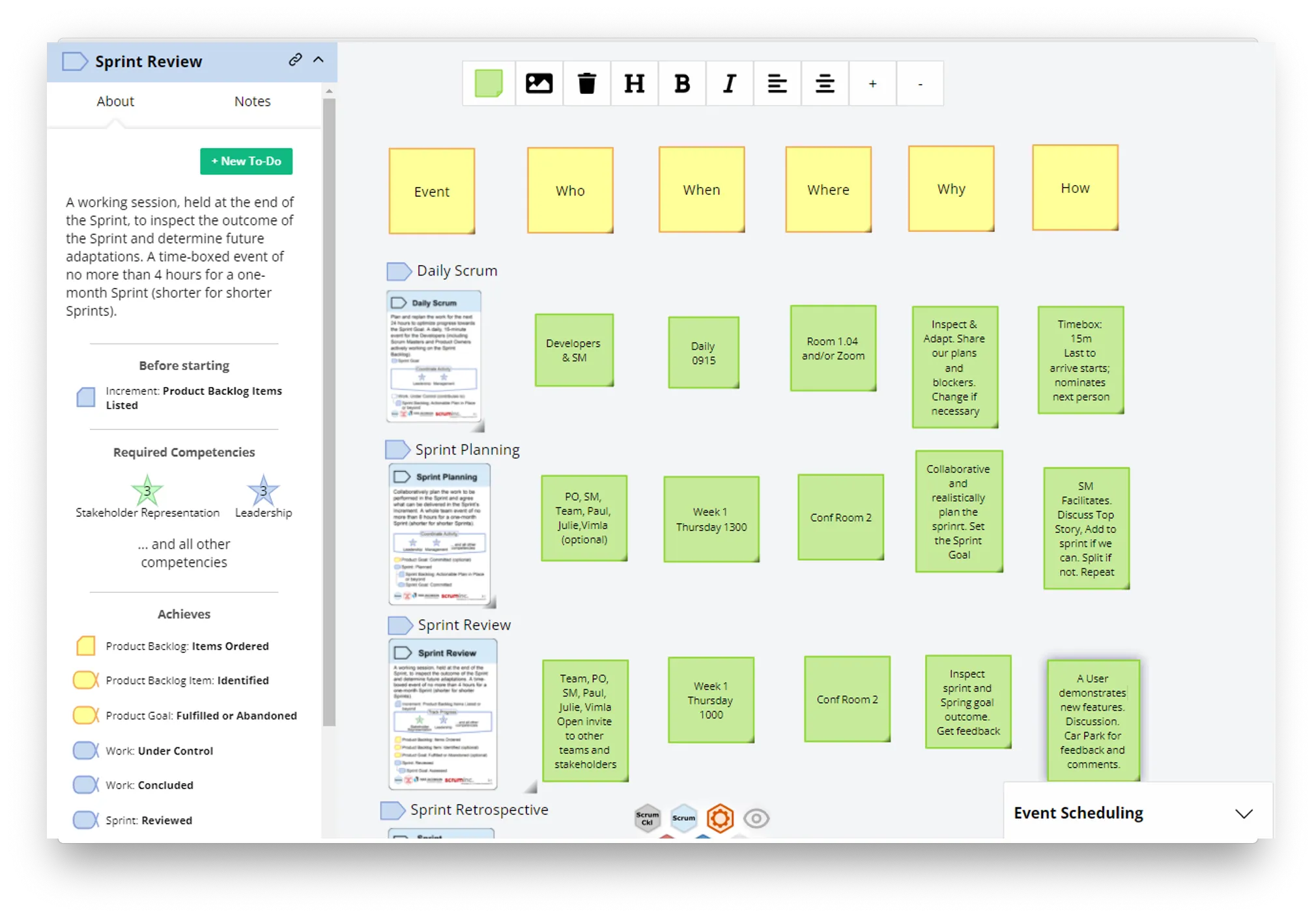Most of the Essence serious games can be played by Scrum Teams. We have developed some additional games though, just for Scrum. This page lists some of the games most suitable for Scrum teams.
Many of the games are easily played within Essence WorkBench™ (formerly TeamSpace), either directly or using a GameBoard. There are GameBoard templates for many of these games that can be used or adapted.
If you are not using Essence WorkBench™, for most of these games you will need:
- Physical or Electronic cards or tokens for the practice(s) you are using
- Physical or Electronic canvas of some sort such as flipchart, whiteboard, Mural or Miro.
